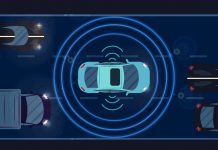Veoneer collaborative and Automated Driving (AD), announced its support to Thatcham Research, the motor insurers’ automotive research center in the UK, when making the world’s first attempt to launch guidelines that minimize bumps in the road on the journey towards fully automated driving.
Safety is a prerequisite for creating trust in mobility, and Veoneer supports Thatcham Research in launching the first guidelines for safe introduction of Automated Driving Systems. “There are significant hurdles to ensuring that automated driving successfully elevates road safety from where it is today,” says Ola Boström, VP Research, Veoneer.
The transition from assisted to Automated Driving, where sensors and systems play a primary role in what we think of today as the act of driving, is an area of potential risk. It is in this transition period, during which functionality is limited and the driver is required to take back control in certain situations, the risk of accidents may increase.
The 12 principles in Thatcham Research’s guidelines include; training to ensure that drivers understand the vehicle’s automated functions; geofencing to restrict the automated system to motorway driving only; and in-vehicle displays to clearly indicate whether the car or user is responsible for driving at all times. In addition, the guideline dictates that if the driver does not take back control when required, the vehicle must be able to assess the safest minimum-risk maneuver and undertake it according to the prevailing road conditions. “This should never mean simply deactivating automation,” Veoneer and Thatcham Research agrees.
It is predicted that in 2030, the vast majority of all cars sold will include advanced technologies that provide collaborative interaction with the driver, while a fraction of the market will be fully autonomous cars.













